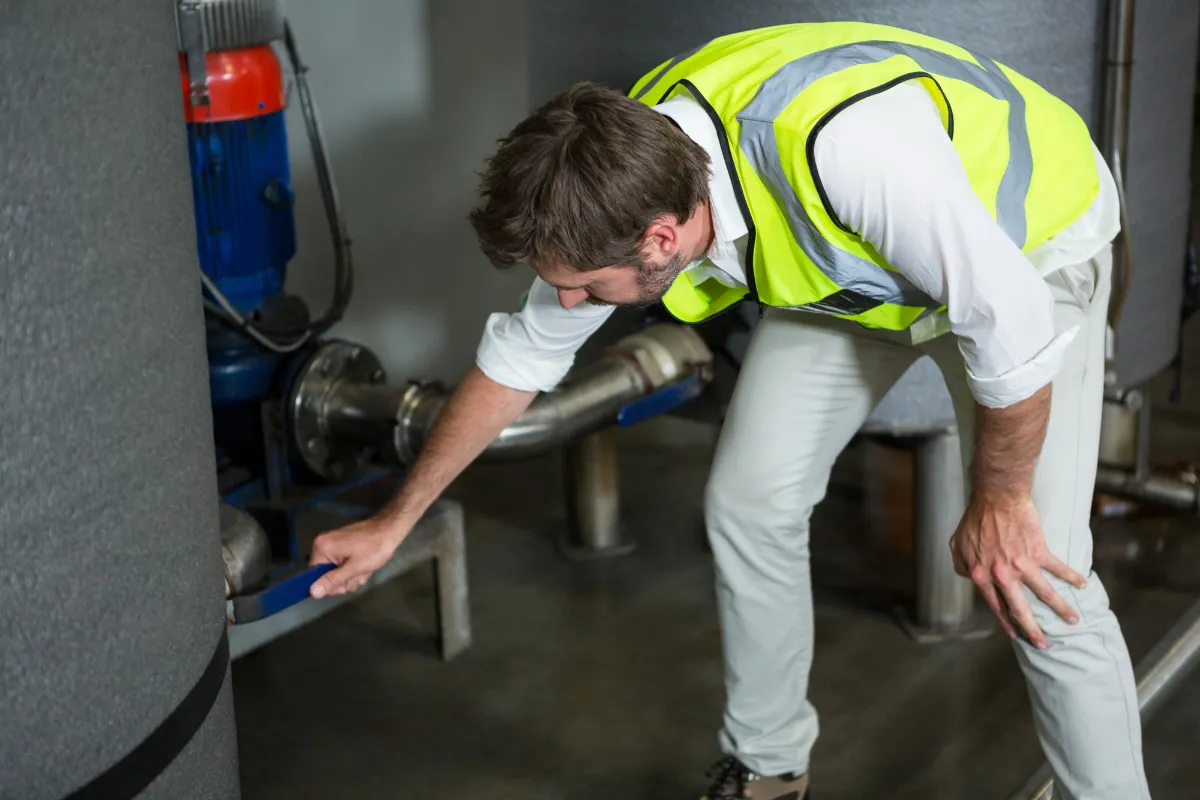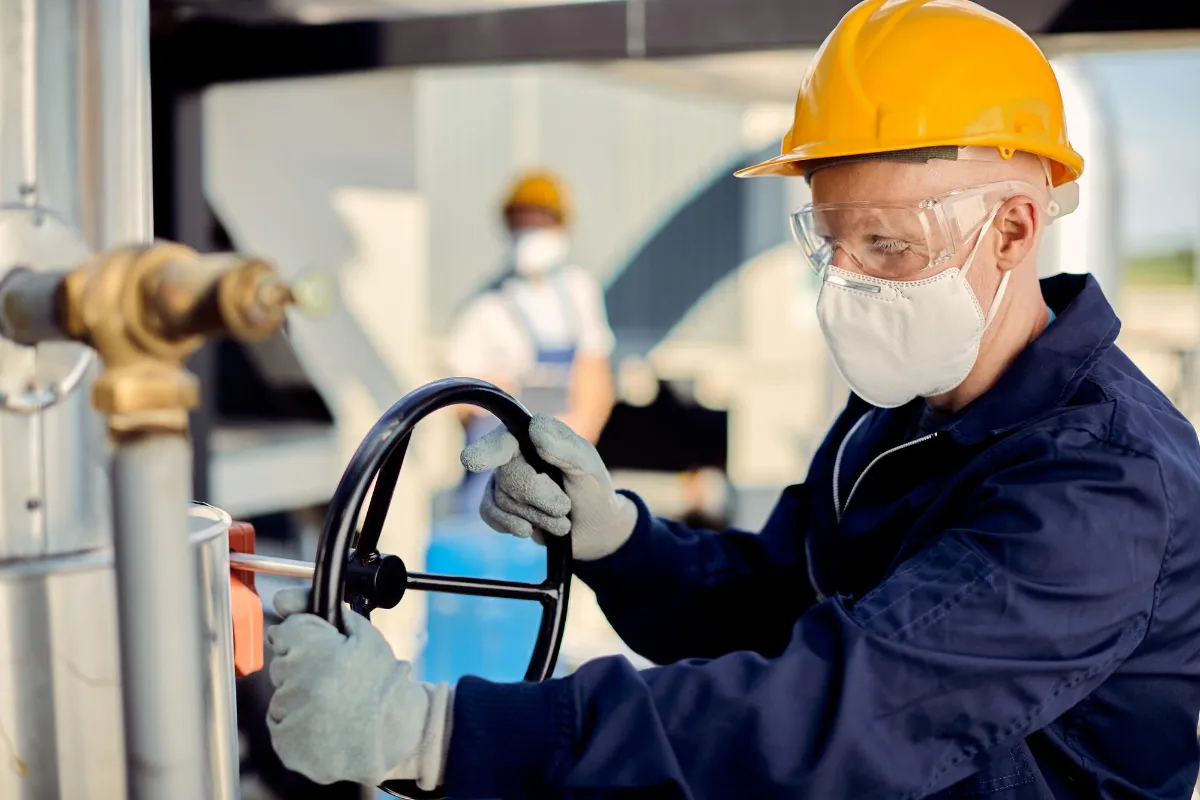Efficient water pipe inspections are crucial for ensuring the smooth operation of any property’s plumbing system. By streamlining the inspection process, you can not only save time and resources but also detect potential issues before they escalate into costly problems. In this article, we will explore the benefits of efficient water pipe inspections, strategies for achieving optimal efficiency, and the role of quality control in this essential workflow.

Streamlining the Inspection Process: How to Get it Right
To master the water pipe inspection workflow, it is essential to have a clear understanding of the process and the tools at your disposal. Start by assessing the layout of the property’s plumbing system and identifying potential problem areas. Create a well-defined checklist that covers all the necessary inspections, including checking for leaks, assessing water pressure, and inspecting pipe connections.
Investing in specialized inspection tools can significantly streamline the process. Modern technologies, such as high-resolution cameras and thermal imaging devices, can quickly identify hidden issues without the need for invasive procedures. These tools provide clear visual evidence of the condition of the pipes, allowing you to take immediate action if required.
When assessing the layout of the plumbing system, it is important to consider factors such as the age of the property and the materials used in the pipes. Older properties may have outdated plumbing systems that are more prone to issues such as corrosion or blockages. By understanding the specific challenges associated with different types of plumbing systems, you can tailor your inspection approach accordingly.
Leak detection is a crucial part of the inspection process. Even a small leak can lead to significant water damage over time, not to mention the potential for mold growth. To effectively check for leaks, it is important to inspect all visible pipes and connections thoroughly. Additionally, using specialized leak detection equipment, such as ultrasonic leak detectors, can help identify hidden leaks that may not be visible to the naked eye.
Water pressure assessment is another essential aspect of the inspection process. Inadequate water pressure can indicate underlying issues, such as clogged pipes or faulty pressure regulators. By measuring the water pressure at different points in the plumbing system, you can identify any areas that require attention and ensure optimal water flow throughout the property.
Inspecting pipe connections is crucial to ensure the integrity of the plumbing system. Loose or improperly sealed connections can lead to leaks and water damage. By visually inspecting all pipe connections and using tools like pressure testing kits, you can identify any potential issues and address them promptly.
High-resolution cameras are a game-changer when it comes to pipe inspections. These cameras can be inserted into the pipes, allowing you to visually assess their condition without the need for extensive digging or dismantling. The images captured by these cameras provide valuable insights into the overall health of the pipes, including any signs of corrosion, blockages, or structural damage.
Thermal imaging devices are another valuable tool in the inspection process. These devices can detect temperature variations in the pipes, indicating potential issues such as leaks or insulation problems. By using thermal imaging, you can quickly identify areas that require further investigation and take appropriate action to prevent further damage.
In conclusion, streamlining the inspection process requires a combination of thorough planning, the use of specialized tools, and a keen eye for detail. By following a well-defined checklist and leveraging modern inspection technologies, you can ensure a comprehensive assessment of the plumbing system, identify potential issues, and take proactive measures to maintain its integrity.
Benefits of Efficient Water Pipe Inspections
Efficient water pipe inspections offer numerous advantages for both property owners and maintenance professionals. By detecting leaks and potential weaknesses early on, you can prevent major water damage, saving both money and resources. According to industry statistics, water leaks contribute to significant waste, with an estimated 1 trillion gallons of water lost annually in the United States alone.
Regular inspections also ensure the longevity of the plumbing system. By identifying and addressing minor issues promptly, you can prevent them from developing into more extensive, costly problems. Additionally, efficient inspections enhance the overall safety of the property by minimizing the risk of sudden pipe bursts or water contamination.
Achieving Optimal Efficiency in Water Pipe Inspections
Mastering the water pipe inspection workflow requires a combination of preparation, skill, and attention to detail. One effective strategy is to divide the inspection into smaller, manageable sections. This approach allows you to focus on specific areas, ensuring a thorough examination of the entire plumbing system.
Furthermore, establish a well-organized documentation system to keep track of inspection results and maintenance records. Digital solutions, such as cloud-based platforms or specialized mobile applications, can simplify this process, offering easy access to historical data and providing a comprehensive overview of previous inspections and repairs.

Strategies for Mastering the Water Pipe Inspection Workflow
Automation plays a critical role in enhancing the efficiency of water pipe inspections. By implementing automated inspection systems, property owners and professionals can eliminate human error and speed up the process. These systems can detect leaks, analyze water flow patterns, and provide real-time data.
Additionally, utilizing predictive maintenance techniques can save time and resources. By leveraging historical data and statistical models, it is possible to identify patterns and predict potential issues. This proactive approach allows for timely interventions and prevents costly emergency repairs.
Automating Water Pipe Inspections for Maximum Efficiency
Automation not only increases efficiency but also reduces costs associated with traditional inspection methods. According to industry research, automated inspections can cut water loss by up to 50% and reduce inspection time by as much as 75%. These savings translate into substantial financial benefits for property owners and maintenance professionals.
The Role of Quality Control in Water Pipe Inspections
Quality control is an integral part of the water pipe inspection workflow. Regularly monitoring and evaluating the inspection process ensures accuracy and reliability. Implementing quality control measures guarantees consistency among different inspection teams and allows for continuous improvement.
One effective approach to quality control is conducting periodic reviews and audits. These evaluations help identify any weaknesses or areas for improvement in the inspection process. By addressing these issues promptly, you can enhance the overall efficiency and effectiveness of water pipe inspections.
In conclusion, efficient water pipe inspections are essential for maintaining the integrity of a property’s plumbing system. By streamlining the inspection process, investing in modern technology, and implementing automation, you can master the workflow and achieve optimal efficiency. Ultimately, these measures not only save time, resources, and money but also contribute to the long-term sustainability and safety of the property.
